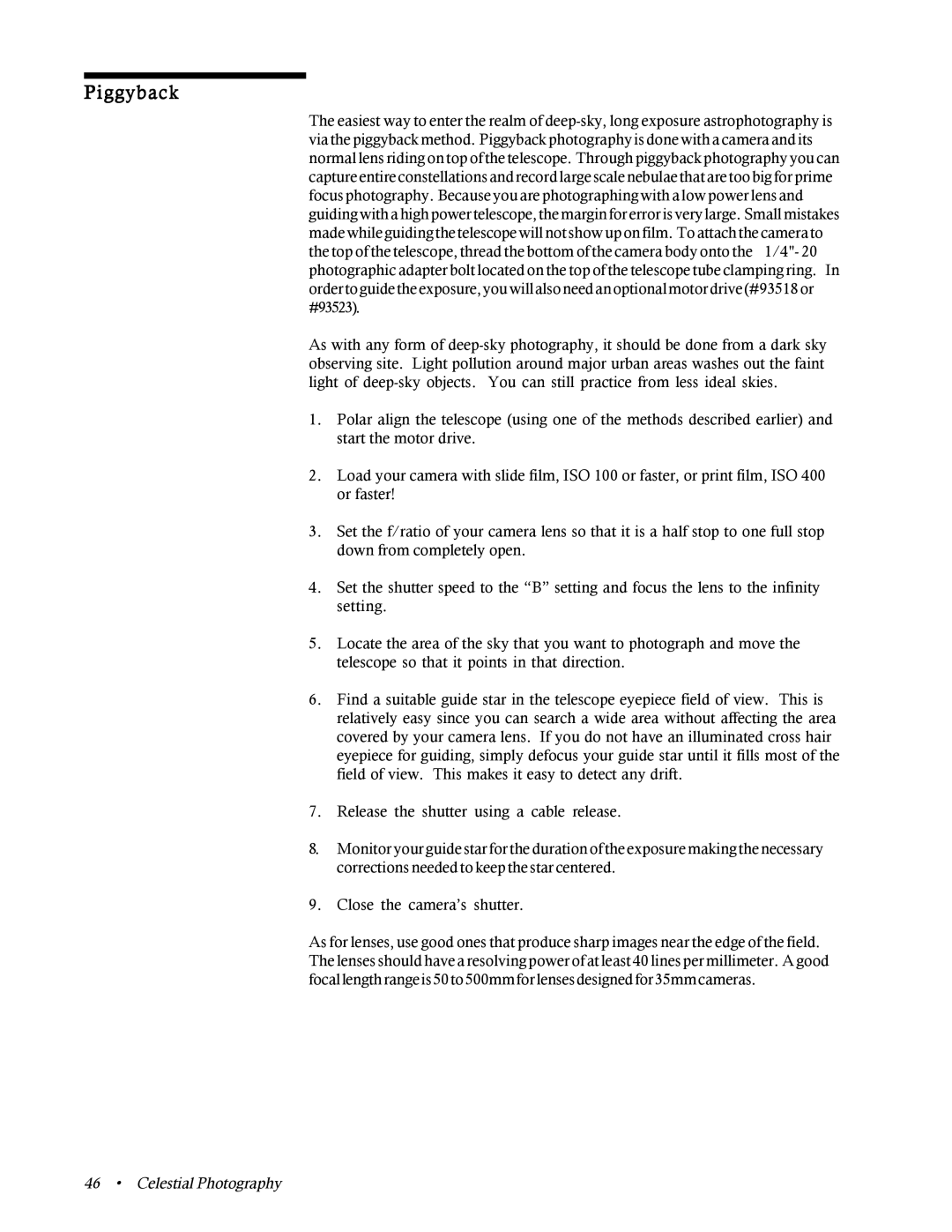Piggyback
The easiest way to enter the realm of
As with any form of
1.Polar align the telescope (using one of the methods described earlier) and start the motor drive.
2.Load your camera with slide film, ISO 100 or faster, or print film, ISO 400 or faster!
3.Set the f/ratio of your camera lens so that it is a half stop to one full stop down from completely open.
4.Set the shutter speed to the “B” setting and focus the lens to the infinity setting.
5.Locate the area of the sky that you want to photograph and move the telescope so that it points in that direction.
6.Find a suitable guide star in the telescope eyepiece field of view. This is relatively easy since you can search a wide area without affecting the area covered by your camera lens. If you do not have an illuminated cross hair eyepiece for guiding, simply defocus your guide star until it fills most of the field of view. This makes it easy to detect any drift.
7.Release the shutter using a cable release.
8.Monitor your guide star for the duration of the exposure making the necessary corrections needed to keep the star centered.
9.Close the camera’s shutter.
As for lenses, use good ones that produce sharp images near the edge of the field. The lenses should have a resolving power of at least 40 lines per millimeter. A good focal length range is 50 to 500mm for lenses designed for 35mm cameras.
